Modeling of Lasers with the Computer Program
Konrad Altmann1*
1 Konrad Altmann LAS-CAD GmbH, 80639 München, Brunhildentrasse 9, Germany.
*Corresponding Author:Konrad AltmannLAS-CAD GmbH, 80639 München, Brunhildentrasse 9, Germany, Tel: +49 89 173607; Fax: +49 89 173607; E-mail: dr.altmann@lascad.com
Citation: Konrad Altmann (2022) Modeling of Lasers with the Computer Program. Nano Technol & Nano Sci J 4: 130.
Received: November 26, 2022; Accepted: December 16, 2022; Published: December 21, 2022.
Copyright: © 2022 Konrad Altmann, et al. This is an open-access article distributed under the terms of the Creative Commons Attribution License, which permits unrestricted use, distribution, and reproduction in any medium, provided the original author and source are credited.
Introduction
During the last 20 years LASCADTM was becoming an industry-leading software for Laser Cavity Analysis and Design. The feedback from a large community of users has helped us gather experience for improving laser resonator design.
To optimize laser cavity design, LASCADTM provides a unique combination of simulation tools:
- Thermal and Structural Finite Element Analysis (FEA)
of thermal effects in laser crystals
- ABCD Gaussian Beam Propagation Code
taking into account thermal lensing, gain guiding, etc.
- Dynamic Analysis of Multimode and Q-switched operation (DMA)
analyzing the dynamic, 3D behavior of laser beams
- 3D Physical Optics Beam Propagation Code (BPM)
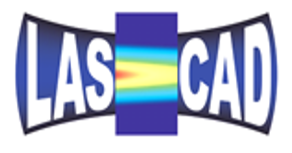
LASCAD the Optical Workbench on the PC
LASCAD™ provides complex engineering tools developed for ease of operation. The graph-ical user interface of the program, shown in Fig. 1, can be used like an optical workbench on the PC, allowing intuitive design of laser resonators. In this way LASCAD helps users to process experimental results without wasting valuable time studying complicated manuals.
• Optical elements, such as mirrors, lenses, or crystals can be added, combined, adjusted, or removed by mouse clicks• LASCAD™ automatically accounts for astigmatism in the crystal and resonator.
• The program menu makes available thermal finite element analysis, gaussian ABCD matrix code, physical optics code, analysis of Q-switched operation, computation of laser stability and power output.
Figure1:
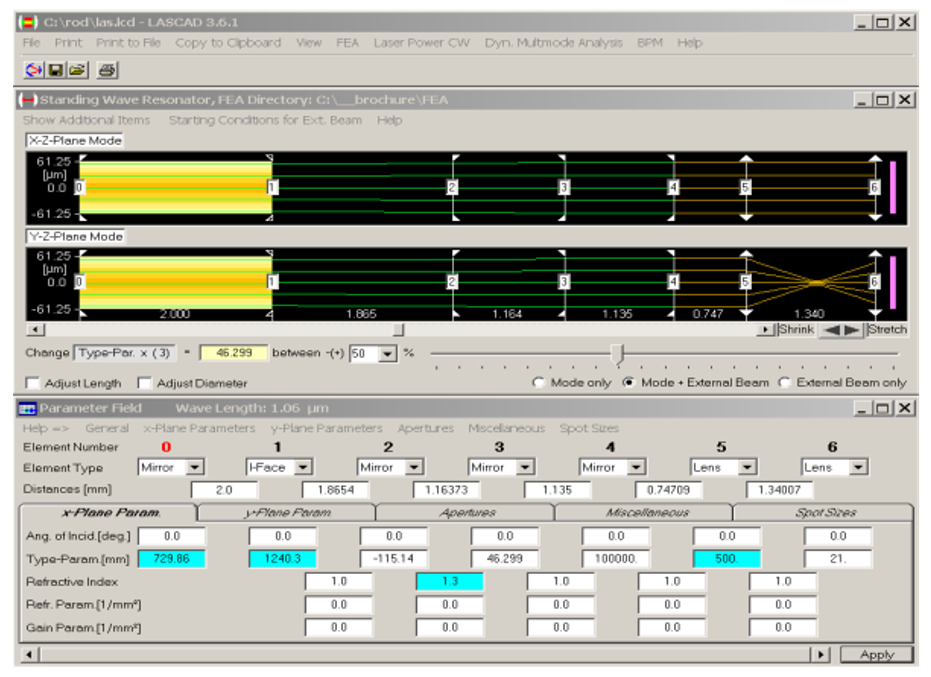
Lascad™ The Laser Engineering Tool
To develop a powerful resonator design, the laser engineer is confronted with many interact-ing technical and physical problems. Thermal lensing is of growing importance, due to the tendency to miniaturize laser systems, while simultaneously increasing power output. The effect strongly depends on system characteristics, such as: material parameters, resonator geometry, pump beam distribution, or cooling layout. It interferes with gain dynamics, mode competition, Q-switching, and other effects, which control beam quality and laser efficiency in a complicated manner. Based on numerical simulation of these effects, LASCAD™ pro-vides the laser engineer with a quantitative understanding of the characteristics of a cavity design.
Thermal Effects Finite Element Analysis (FEA) of
FEA is used to compute temperature distribution, deformation, stress and fracture mechanics in laser crystals. This takes into account material parameters, pump configuration and cooling geometry. FEA is a well-known numerical method for solving partial differential equations of technical physics, such as the equation of heat conduction. Though indispensable and applied with great success in other engineering disciplines, the benefits of FEA have not been available so far in commercial laser design software.
To enable the straightforward use of FEA for laser cavity design, LASCAD™ offers pre-designed FEA models for important configurations, such as: end and side pumped rods, slabs, and thin disk lasers. Models are also available for crystals composed of various mate-rials, or of doped and undoped regions, such as undoped end caps. The user can customize dimensions, FEA mesh, boundary conditions, and other parameters within the models. Temperature dependence of material parameters can be taken into account by the use of analytical expressions provided by the user. Analytical approximations, based on super-Gaussian functions, are used to model the absorbed pump power density. To enable numerical modeling of the absorbed pump light distribution, LASCAD™ has interfaces to the ZEMAX and TracePro ray tracing programs. These programs generate 3D data sets of the absorbed pump power density that can be used as input for LASCAD™. Numerical modeling of the absorbed pump light with ZEMAX or Trace Pro is particularly useful for flash lamp pumped lasers or unusual pump configurations.
Figures 2a, 2b, and 2c show plots of temperature distribution, deformation, and stress intensity, respectively, in an end pumped cylindrical rod. Figures 3a, 3b and 3c show absorbed pump power, temperature, and the z-component of the stress tensor, respectively, in a side pumped rod.
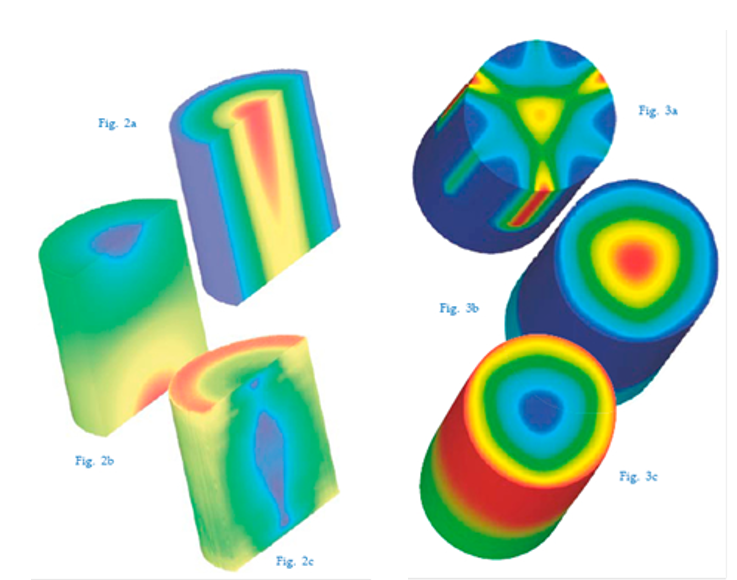
Gaussian ABCD Matrix Approach
When using the FEA results with the ABCD matrix code, the temperature distribution, multi-plied by the temperature dependence of the refractive index, is fitted parabolically at right angles to the optical axis, using the finite element mesh subdivisions, as shown in Fig. 4. In the same way, a fit of the deformed end faces of the crystal is accomplished. For many con-figurations - end pumped rods for example - this approximation delivers reliable results for the laser mode.
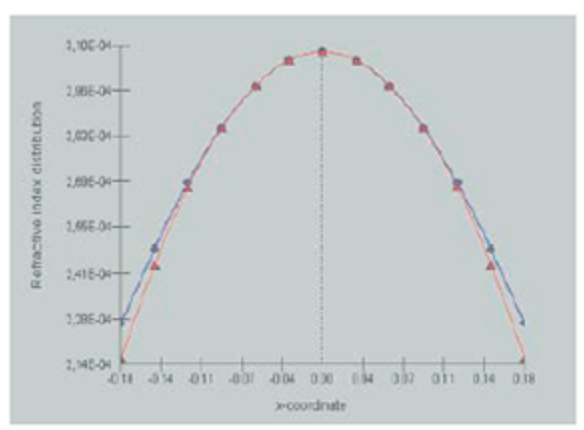
higher order Hermite-Gaussian polynomials, can be displayed along the resonator axis, as shown in Fig. 1. In addition, overlap between pump beam and laser mode can be visualized along the crystal axis. To account for astigmatism, the computations are carried through simultaneously in two planes perpendicular to the resonator axis.
In case of standing-wave resonators, a stability diagram, based on generalized g-parameters, can be computed, as shown in Fig. 5.
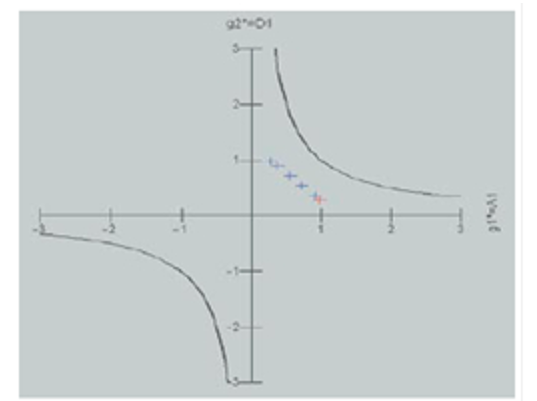
The obtained distribution for the absorbed pump power density and the gaussian modes can be used to analyze CW, as well as transient laser behavior.
CW Laser Behavior
A straightforward tool is provided for CW operation. It computes the power output for fundamental mode and approximately also for multimode operation. Solution of the time independent 3D laser rate equations is obtained by iterative integration over the crystal volume. Fig. 6 shows an example with results for an end pumped Nd: YAG rod. The circles represent simulation results; the green triangles are measurements. See paragraph “Verification of Results.
Transient Laser Behavior
To analyze the transient laser behavior, LASCAD™ provides a tool for the dynamic analysis of multimode and Q-switched operation (DMA). For this purpose, time dependent rate equations, describing the individual numbers of photons in a predefined set of Gaussian trans-verse eigenmodes, are solved by the use of a finite element solver. This approach provides a detailed description of mode competition, power output, beam quality, and pulse shape. Results turned out to be in good agreement with experimental measurements; see paragraph “Verification of Results”.
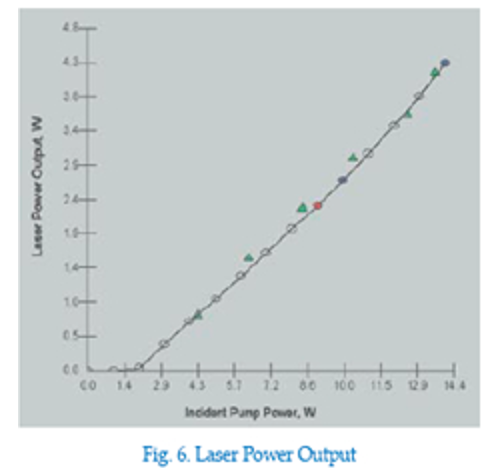
The Dynamic Multimode Analysis (DMA) offers important features:
- Computation of pulse shape and time-dependent power output for Q-switched lasers with high repetition rates, as well as for single pulse operation
- Computation of individual power output of transverse modes for CW and Q-switched operation
- Computation of beam quality M² for CW and Q-switched operation
- Effect of hard-edged and gaussian apertures on beam quality
- Output mirrors with gaussian and supergaussian reflectivity profile
- Figure7,8

Physical Optics Approach
In cases where parabolic approximation and ABCD matrix code are not sufficient, FEA results can be used as input for a physical optics code. This code provides full 3D simulation of the interaction of a wavefront propagating through the crystal without using parabolic approximation. For this purpose, the code uses a split-step Beam Propagation Method (BPM) to propagate the wavefront in small steps through the hot, thermally deformed crystal. It takes into account the distribution of the local refractive index, as well as the deformed end faces of the crystal, as obtained by FEA. Based on the principle of Fox and Li, a series of roundtrips through the resonator is computed, which finally converges to the fundamental mode or to a superposition of higher order transverse modes. Figure 9
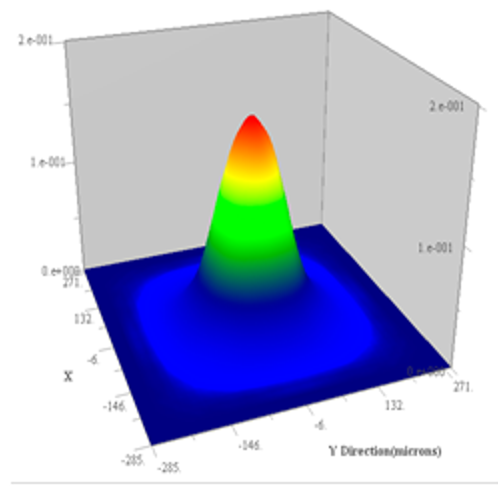
Two graphic windows are opened while the computation is running. One of them shows the intensity profile at the output mirror, as it develops with increasing number of iterations. An example is shown in Fig. 9. The other window displays the convergence of the spot size with cavity iteration and the simultaneously computed power output, as shown in Fig. 10. additionally, a third window showing the beam quality can be opened.
The BPM tool also is capable of numerically computing the spectrum of resonator eigenvalues and the shape of the transverse eigenmodes.
The BPM tool takes into account gain dynamics and diffraction effects, due to the finite ex-tension of apertures and mirrors, more generally than the DMA code. Another important feature of the BPM physical optics code is the simulation of misalignment effects. Figure10
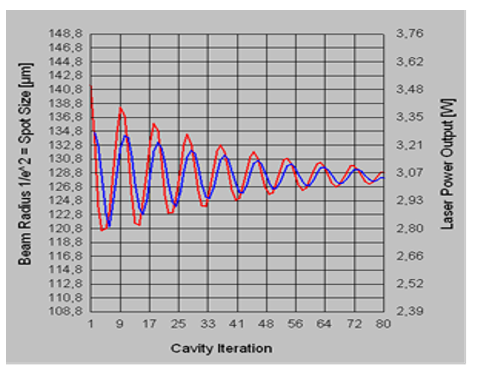
LASCAD™The Educational Tool
Though primarily designed for laser engineering, the easy-to-use GUI makes LASCAD™ ideally suited for educational purposes for students, as well as for practicing scientists and engineers. The principles of gaussian beam optics can be studied interactively, and the behavior of complicated heterogeneous resonator configurations, including thermal lensing effects, apertures and Q-switches can be clearly demonstrated.
Verification of Results and Outlook
The laser group of Prof. R. Wallenstein at the University of Kaiserslautern, Germany has been using the program for several years for analysis and optimization of the behavior of compo-site crystals in diode-pumped, high-power lasers. A series of detailed measurements have verified the results of simulation to a high degree; see
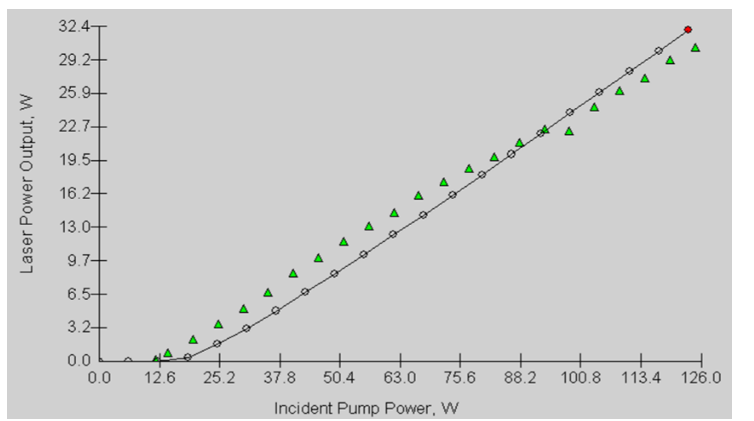
Figure11: Output vs. Input Power for a 5 at. % Yb:YAG Laser Measurements: Laser Group, Univ. Kaiserlautern. Computation using temperature dep. stim. em. cross section. The circles show the compuation, the grenn triangles the measurements.
Numerical results obtained with DMA have been verified experimentally in cooperation with InnoLas GmbH Germany, as described in the paper "Dynamic multimode analysis of Q-switched solid state laser cavities" in Optics Express, Vol. 17, 17303-17316 (2009). Another objective of the research project is the development of an FEA approach to provide a dynamic 3D solution of the electromagnetic field equations in a laser cavity. First results were presented at Photonics West 2009; see "Finite element simulation of solid-state laser resonators" in Proceedings of SPIE Vol. 7194-16 (2009).
LASCAD has been sold into 49 countries and more 300 users work with this program. Please find a partial users list on our website http://www.las-cad.com/lascad_users.php.
